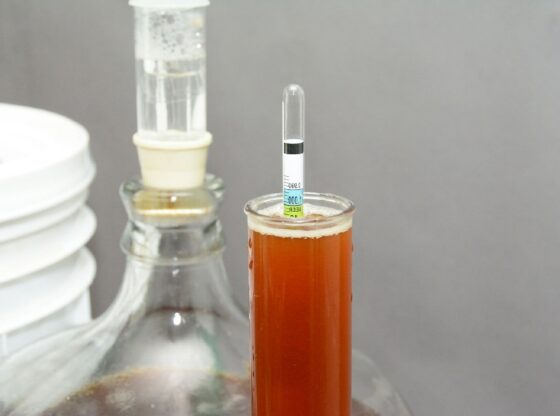
By Hendre’ Barnard, Training and Marketing Manager
Distillique Beverage (Pty) Ltd.
https://distillique.co.za
Click <Here> to see more of Hendre’s articles.
Sugar is the most important chemical component in the production of alcohol and alcoholic products. No sugar, no fermentation, no alcohol. There are however certain situations where excessive sugar can be a detriment to our fermentation and products, as described in our Article about Successful Fermentations.
We therefore need to know how much sugar we have, what that will give us in terms of alcohol after fermentation, and lastly how to get the maximum out of my yeast.
Sugar measurements are made in one of two ways – through a Specific Gravity Hydrometer (SG Meter) or a Refractometer. Both use the same element to determine Sugar Content, i.e. density, but in different forms. Both also have their own benefits and drawbacks.
Some consider Refractometers to be much easier to use and much more accurate, but they cannot be used to gauge to progress of a fermentation, while an SG meter can. More on this in our Article about Fermentation Monitoring.
Once we have our SG Reading or Brix reading (either from an SG Hydrometer or a Refractometer) we can start our calculations.
How much Sugar is in my Fermentation?
To Calculate the Quantity of Sugar in a Mash so that we can determine the Alcohol Potential during fermentation, we use the following formulas:
S = Bx x V x 10
Sugar in Grams = Brix in Percentage x Volume in litres x 10
(if using the Brix Reading)
S = (SG-1) x V x 2500
Sugar in Grams = (SG as per reading – 1) x Volume in litres x 2500
(if using a SG Reading)
We now know how much sugar in grams we have in our fermentation.
What is the Alcohol Potential of my Fermentation?
To Calculate the Alcohol Potential of a Fermentation or Mash to decide on Yeast and Sugar addition, we use the formula:
AP = S / (17 x V)
Alcohol Potential in Percentage Alcohol by Volume (%ABV) = Sugar in Gram / (17 x Volume in Litre)
We now know what the potential alcohol in my fermentation will be if I ferment that amount of sugar. Based on my answer here – if I am a Home Distiller that may adjust my yield – I can decide whether or not I want to increase my sugar content to increase my yield.
How much sugar do I add to my Fermentation?
To Increase the Alcohol Potential in a Fermentation or Mash to a desired level, we use the formula:
STA = 17 x V x TAP – S
Sugar to Add in Grams = 17 x Volume in Liters x Target Alcohol Percentage in %ABV – Sugar in Grams in Fermentation
We now know how much sugar to add to our fermentation to reach the target ABV after fermentation is completed, based either on the alcohol tolerance of the yeast, or our own requirements.
How much Molasses do I add to my Fermentation?
Should we however be working with Raw Materials like Molasses or Cane Syrup or Honey with extremely high concentrations of sugar (Brix readings in the area of 79%) we face the opposite problem. In these cases we would waste a lot of sugar and potential alcohol by fermenting the raw material as is, due to the fact that the yeast will die before fermenting dry (using up all sugar) – that is if the yeast does not die immediately because its sugar tolerance was exceeded. We therefore need to dilute the Raw Material and Sugar content to our required level.
For that we use the following calculations:
17 x AP = S
17 x Alcohol Percentage Required = Sugar in Grams
S / 10 = RBx
Sugar in Grams / 10 = Required Brix Percentage
Now that we know what the Brix Percentage is that we require, we know what we need to dilute our Molasses to:
1 / Bx = DS
1 / Brix Percentage of Raw Material (Decimal Form) = Diluted Sugar
FS x RBx x DS = MV
Fermentation Size Required (Decimal Form) x Required Brix Percentage (Decimal Form) x Diluted Sugar = Molasses Volume (lt)
Now we know how much Molasses of a specified Brix value we need to pour into a container and add water to a specified total volume to have a required Brix value to ferment for maximum alcohol yield.
Remember that FS (Fermentation Size Required) – MV (Molasses Volume) will give you WTA (Water to Add).
May these formulas be of assistance to you and keep on Distilling!


